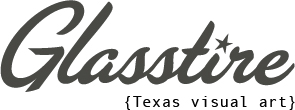The Blanton Museum of Art’s latest exhibition, In Creative Harmony: Three Artistic Partnerships, challenges the idea of the lone artistic genius, emphasizing that great innovation is rarely formed in solitude. Showcasing more than 100 works, including paintings, sculptures, and mixed-media pieces, the exhibition highlights the dynamic exchange of ideas between six artists in three pairings. Spanning historical and contemporary works, the show explores the power of collaboration through the partnerships of Mexican printmakers José Guadalupe Posada and Artemio Rodríguez, modernist visionaries Arshile Gorky and Isamu Noguchi, and Pueblo potters Nora and Eliza Naranjo Morse, a mother-daughter duo continuing a lineage of Indigenous artistry.
To further the theme of collaboration, each pairing was curated by a different curator: Vanessa Davidson, research curator of Latin American art; Claire Howard, former Blanton associate curator of exhibitions and collections; and Hannah Klemm, curator of Modern and Contemporary art.
“Artists have inspired one another for centuries. In Creative Harmony demonstrates how these exchanges push the boundary of creativity by beautifully weaving together three transformative partnerships,” says Blanton Director Simone Wicha.
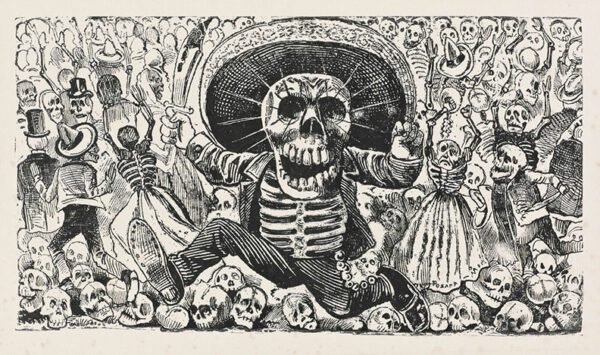
José Guadalupe Posada, ca. 1910, “Calavera Oaxaqueña [Calavera from Oaxaca],” type-metal engraving, Artemio Rodríguez Collection
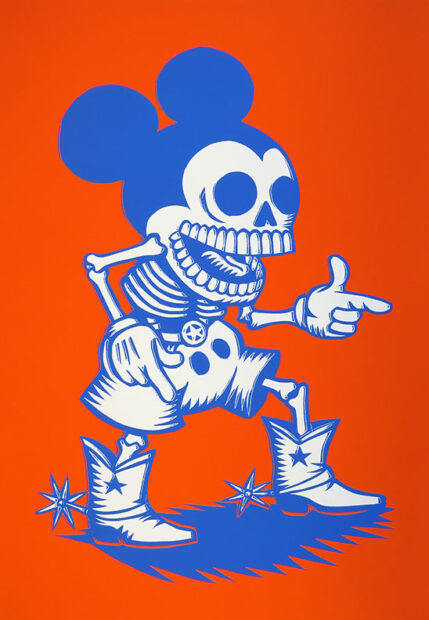
Artemio Rodríguez, “Mickey Muerto 3 [Dead Mickey 3],” 2005, silkscreen on paper, Artemio Rodríguez Collection, courtesy of the artist
For Howard, discovering the friendship between Gorky and Noguchi was particularly exciting, especially their shared experiences and the context that shaped their work. “From their grappling with Modernist forerunners to their embrace of biomorphic abstraction, sense of national dislocation, and engagement with Surrealism and nascent Abstract Expressionism, their connection deeply informed their artistic journeys,” she says.
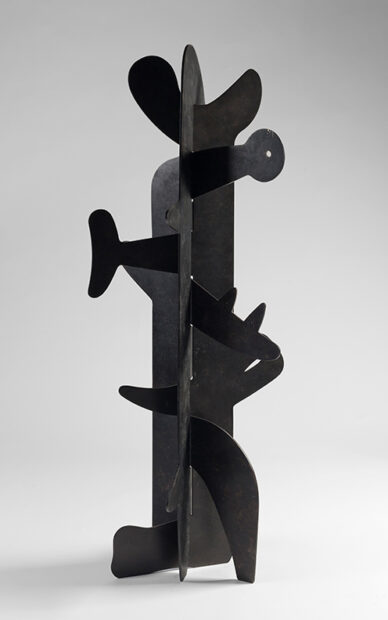
Isamu Noguchi, “Trinity (Triple),” 1945 (fabricated 1988), bronze plate, 55 3/4 x 22 1/4 x 19 1/2 inches. Collection of the Isamu Noguchi Foundation and Garden Museum, New York. Photo: Kevin Noble © The Isamu Noguchi Foundation and Garden Museum / Artists Rights Society (ARS), New York
The duo exhibited their work together in 1930s New York, and this showcase highlights rarely seen collaborative drawings.
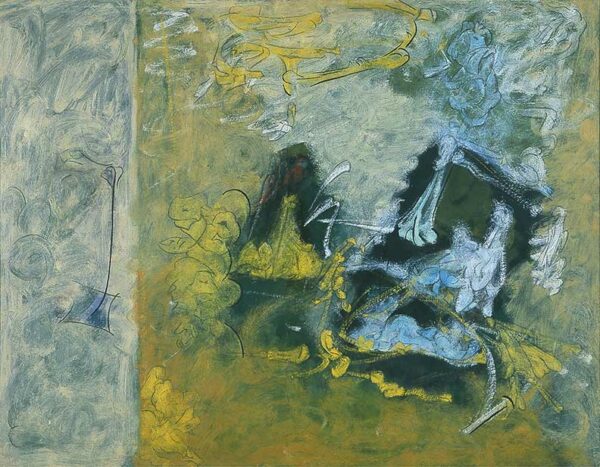
Arshile Gorky, “Dialogue of the Edge,” circa 1946, oil on canvas, 32 1/16 x 41 1/8 inches. Blanton Museum of Art, The University of Texas at Austin, Gift of Mari and James A. Michener, 1991. © 2024 The Arshile Gorky Foundation / Artists Rights Society (ARS), New York
“I’m particularly excited to bring together, for the first time since their creation, the three known collaborative drawings they produced with De Hirsh Margules in response to the outbreak of World War II in Europe. Additionally, I’m thrilled to reunite Gorky’s Nude and Noguchi’s Trinity, which were originally shown together in the fascinating Surrealist exhibition Bloodflames in New York in 1947,” she adds.
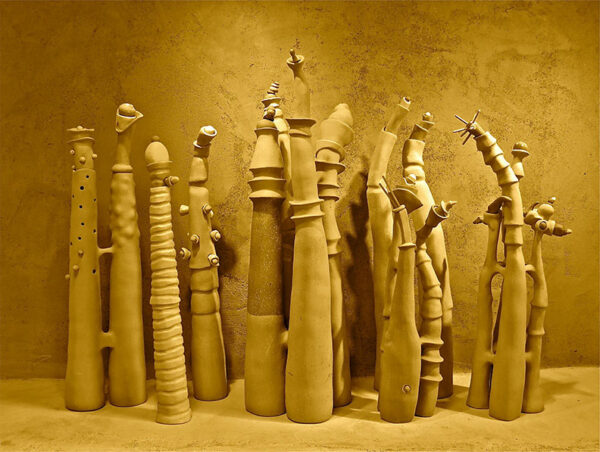
Nora Naranjo Morse, “Moon Orchids,” 2016, clay, full installation (dimensions variable) 4 feet x 27 inches. Courtesy of the artist
Mother-daughter artists Nora and Eliza Naranjo Morse, members of the Naranjo family’s long artistic legacy, created a significant body of new work for this exhibition. Nora’s Healers from Some Other Place, sculptures made from reclaimed materials like burlap sacks and Walmart bags, took shape during the COVID-19 pandemic. Created in stages of lockdown, the project became a collaborative effort among women, including elders from Kha’p’o Owenge and other tribes as far as Minnesota, forming a healing community over three years.
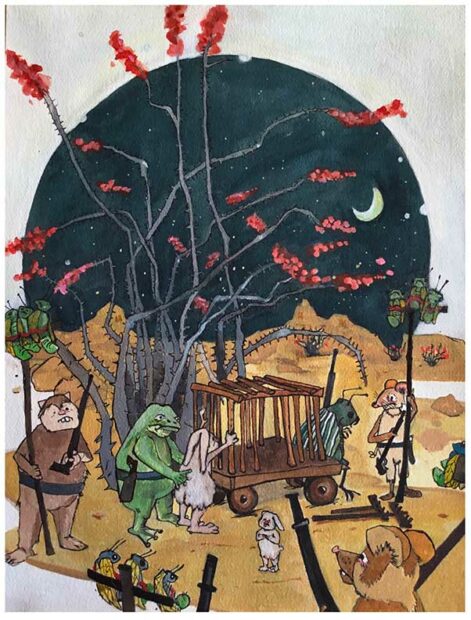
Eliza Naranjo Morse, “Hurt,” 2018, watercolor and clay on paper, 10 x13 inches. Courtesy of the artist
The exhibition centers on these burlap Healers alongside We Come With Stories, a series of hand-coiled sculptures crafted by Nora from Santa Clara and micaceous clay. Rooted in Pueblo traditions, they honor ancestral knowledge and Indigenous cultural narratives.
In Creative Harmony is on view at the Blanton Museum of Art through July 20.
